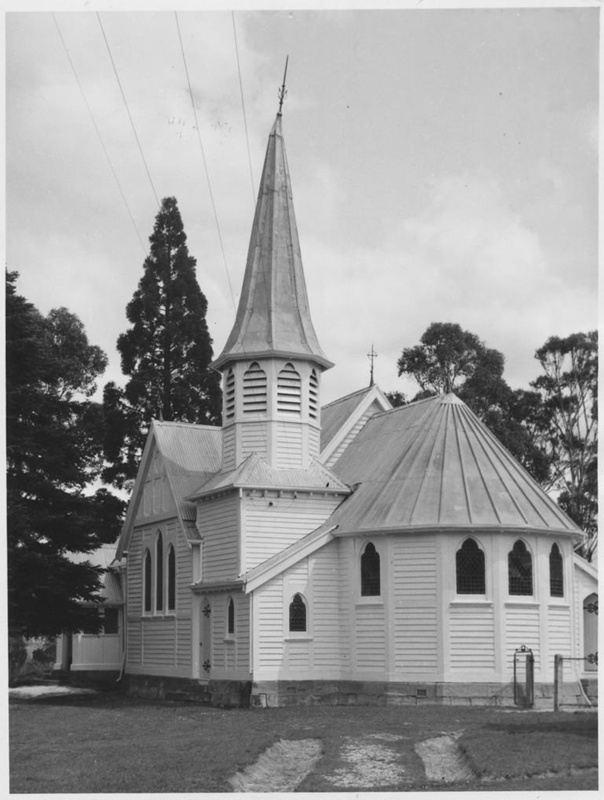Winmarleigh Lodge and Stables, 6 Morris Avenue, Taroona TAS 7053
[Previous Post: Sleat Bank, Hamilton .... Next Post: High Peak, Neika ]
 |
| Winmarleigh Lodge and Stables, 6 Morris Avenue, Taroona TAS 7053 |
- Originally forming part of the iconic Taroona residence "Winmarleigh" the building was completed prior to the main residence and is constructed of solid brick with sandstone quoins, lintels and sills.
 |
| Winmarleigh Lodge and Stables |
In 1885, a successful stock broker named Henry Bayley purchased 23 acres of land first allocated in 1813 and commissioned construction of the iconic Taroona gentleman’s residence ‘Winmarleigh’ and the striking ‘Winmarleigh Lodge & Stables’ building.
 |
| Winmarleigh Lodge and Stables |
Designed by Tasmanian architect George Fagg (The chancel and chapel of St David's Cathedral) these buildings were constructed by owner/builder H.W. Stabb in 1893 using brick (and sandstone quarried on the site?).
- Completed before the main residence in 1888 of solid brick, the building was generously dressed with sandstone quoins, lintels and sills to add enduring character.
The building is dressed with sandstone quoins, lintels and sills - Sir John Demetrius Morris (1902-1956), judge and university chancellor, was raised to the Supreme Court bench in July (1939?) as acting chief justice. His appointment was confirmed by (Sir) Robert Cosgrove in April 1940.
- Socially established (which pleased him and his wife greatly), he bought the spacious home, Winmarleigh (in 1940?).
The classic ‘Winmarleigh Lodge & Stables’ building is a two-storey Federation, Queen Anne style statement.
- The upper floor features semi attic spaces and half timbered gable ends with dormer windows. A prominent chimney is decorated with brick corbels and the magnificent roof of Welsh slate has a louvred turret with lead roof and weather cock adornment as a finishing touch.
‘Wimarleigh Lodge’ has had extensive renovations and improvements to now comprise a 365M2 gracious home in magnificent condition set on 941M2 of land and with easy care gardens.
- Rooms which once accommodated gentleman's carriage, horses and tack now form part of a stunning and gracious family home.
- The carriage house has become a dining room, the tack room an office or fourth bedroom and the loft a stunning master bedroom with water views from french doors opening onto 2 balconies, plus a walk through dressing room and large bathroom.
- The stables are transformed as a spacious and graceful salon with classic baltic pine ceilings, opening onto the gardens.
 |
| ‘Winmarleigh Lodge & Stables |
- The 4 living areas are all exceedingly spacious with a number opening to the delightful grounds, Including:
formal dining room, formal lounge room, conservatory and huge salon with classic Baltic Pine ceiling,Baltic Pine ceiling - These offer a great venue for both entertaining and casual relaxation. The kitchen is in keeping with the ambience of the home being large and an ideal place for both informal catch ups and breakfast.
- The grounds are beautifully landscaped utilising both sandstone and brick they surround and enhance the home to perfection.
References:
- Winmarleigh, 55-57 Morris Av, Taroona, TAS, Australia
- http://www.domain.com.au/6-morris-avenue-taroona-tas-7053-2012297802
- http://www.homehound.com.au/listing/withdrawn/tas/tasmania/hobart-southern/taroona-hobart-southern/6-morris-avenue-taroona-tas-7053/
- http://www.millionplus.com.au/property/residential/6-morris-avenue-taroona/1784746
- http://australia.trovit.com/property/listing/6-morris-avenue-taroona-tas.6f1b1-c71X1y













































